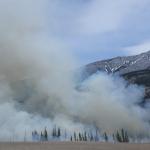The Agent. The assumption behind this paper is the equivalence of wildfire “smoke” and PM2.5, as monitored and regulated by the EPA.
COVID-19 and PM2.5
I’ve written about the impact of climate, global or local, on the transmissibility of COVID-19 on several occasions, e.g., here and




